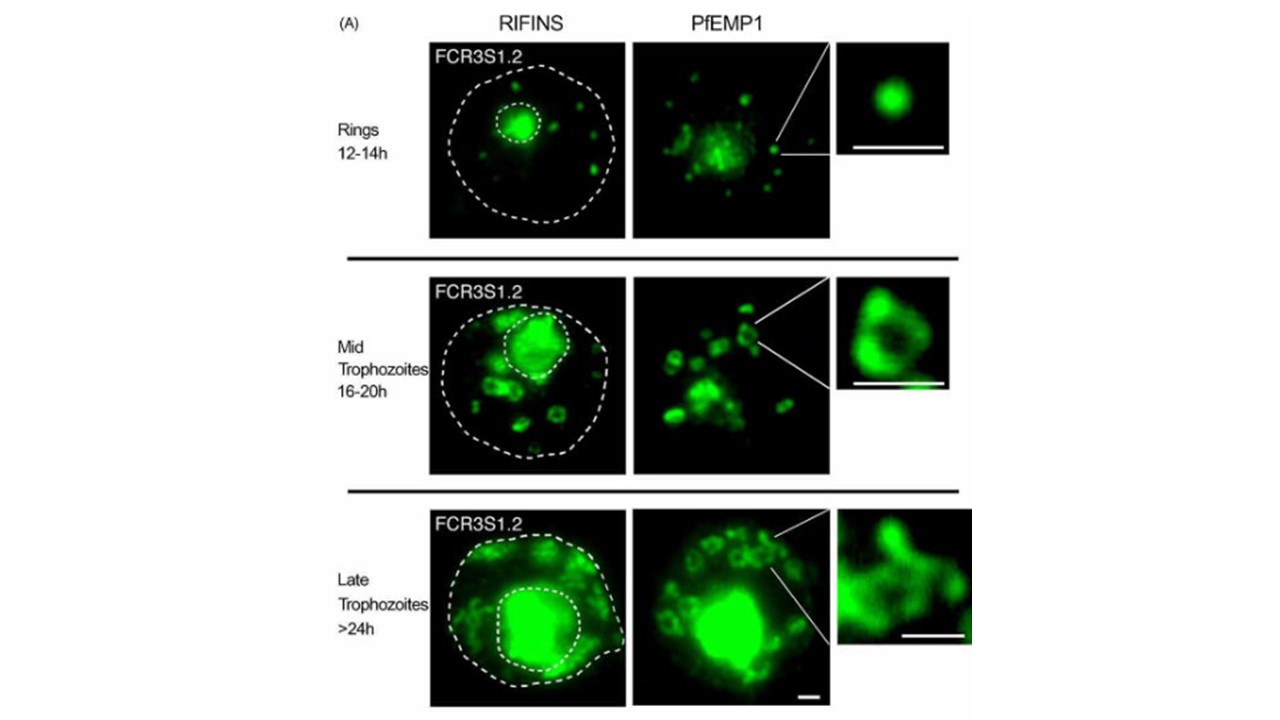Protein-trafficking in the cytosol of P. falciparum-infected erythrocytes. Immunofluorescence studies were performed on air-dried monolayers
of parasite cultures adapted to in vitro growth (FCR3S1.2(K ). (A) Cytosolic trafficking patterns of RIFINS and PfEMP1. Cell monolayers of rings
(10–14 h), mid-trophozoites (16–20 h) and late trophozoite stage IE (>24 h) were probed with antibodies to the conserved C-terminal ends of RIFINS
and PfEMP1 as described in Section 2. Typical vesicle structures are shown in detail. Dashed lines in the left column outlines the erythrocyte membrane
(large) and the parasitophorous vacuole (small). (B) Kinetics of vesicle-mediated trafficking of RIFINS, PfEMP1 and Pf332 in the IE cytosol. (C) Changes of cytosolic vesicle-types, single small vesicles (SSV) and large multimeric vesicles (LMV), transporting the variant antigens (here RIFINS are shown), as the parasite develops from ring to pigmented trophozoite stage. Highly synchronous cultures of FCR3S1.2(K -) were harvested with 2- or 4-h intervals. Representative experiments are shown. Scale bar: 1 mm. Haeggström M, Kironde F, Berzins K, Chen Q, Wahlgren M, Fernandez V. Common trafficking pathway for variant antigens destined for the surface of the Plasmodium falciparum-infected erythrocyte. Mol Biochem Parasitol. 2004 133(1):1-14. PMID: 14668007™áÿÿ
Other associated proteins
| PFID | Formal Annotation |
|---|---|
| PF3D7_0413200 | PIR protein rifin |
| PF3D7_0713000 | rifin PIR protein |
| PF3D7_1149000 | antigen 332, DBL-like protein |
